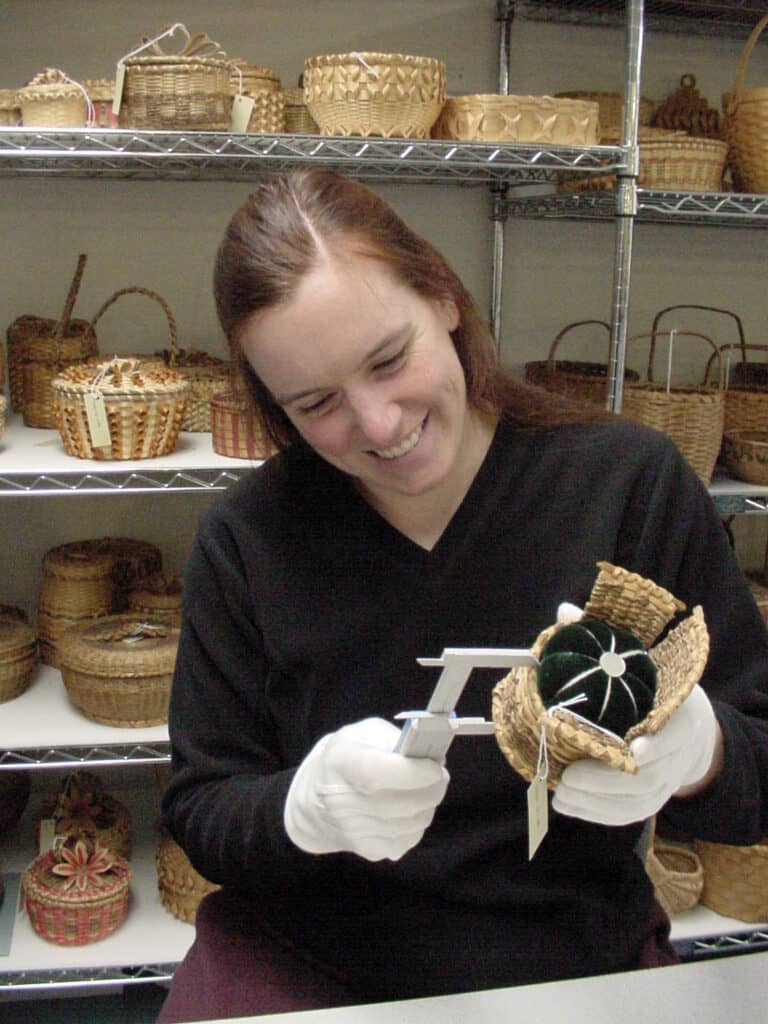Stewardship Note

Accessioning and Cataloging Objects
- The focus here is objects. See Arranging and Describing Archival Collections for some different best practices.
- What’s the difference between libraries, archives, and museums?
One responsibility of the History Trust Collections Committee is to offer our members resources and guidance about collections care, handling, and management. To that end, we have discussed best practices in cataloging object/museum collections. One important topic is how museum cataloging differs from library cataloging (or indexing). For example, provenance and acquisition history are key parts of an object’s record. This information is needed to meet legal requirements for acquiring and holding museum collections and for understanding the historical significance of an object.
Provenance refers to the history of the object, with a focus on ownership—who created the object, and whose hands has it passed through during its lifetime? Provenance has both historical and legal significance. You may have seen stories about artwork stolen from Jewish families by the Nazis during World War II, and the provenance research required to reunite these pieces with their rightful owners at institutions such as the Museum of Fine Arts in Boston. While the provenance for the objects in your collections is probably not as problematic, it can pose interesting challenges.
Acquisition history is how the piece came to be part of the museum’s (or other collecting institution’s) collection. Was it donated, purchased, found in storage? Who donated it or sold it, and did they have legal title to it? Did the collecting institution document the acquisition and get a signed deed of gift (an example of a deed of gift)? Did the object become part of the permanent collection, or part of an archive, education collection, or study collection?


Other key pieces of information often recorded in a collection record include the condition of the object, and its current location (storage location, exhibit location, out on loan). I will talk more about these in a later post.
- Documentation of the museum’s legal title to the item. This can be a real challenge for many organizations, especially for older collections with virtually no records. In many cases, you have little-to-no information about how the object came to be in the collection. There is a well-defined process to establish title to objects “found in collection” using Maine’s unclaimed property laws, but it can be time consuming. The Maine state law addressing this situation can be found here.
- A description with enough detail that another person could read it and match it to that item if, for example, the object number was somehow disconnected from the object. So, if you have several spinning wheels, the description should include details that would allow you to determine which spinning wheel this record goes with. This can also mean good, consistent recording of dimensions. Digital photos are very helpful for this, but only if there is something in the photo (a tag for example), or if the image file is correctly renamed, so that the image file can be clearly connected to the catalog record for the item. You need to be able to know which documentation, which provenance, goes with which object.
- It should include the history of the object, which is the real significance of the object- some random spinning wheel is not terribly significant for local history, but the spinning wheel used by a really important member of the community who was known for their fine fiber work is much more significant.
- It is especially important to note that having a good numbering system (and the number properly applied or attached to the object) is key here, because you want to be sure to keep that object’s history and story connected to that object, so you have to be able to connect the records to the object. Numbering systems and how to properly apply numbers to museum objects is a whole topic in itself!

This item from the Great Cranberry Island Historical Society includes lots of good information in the “Description” field on Digital Archive. It tells us who made the doll, who gave it to the museum, its historical context, and detailed description that distinguishes it from the other “Hitty dolls” in their collection. It also includes the tag with the catalog number in the photo.
— “Hitty Greene doll,” Great Cranberry Island Historical Society…view item
If you are looking for some more guidance to get started, this is a nice example of a manual for cataloging and managing museum collections. It is from Australia, but is consistent with U.S. practices and standards. It also includes some useful information on physical care and marking collections.


